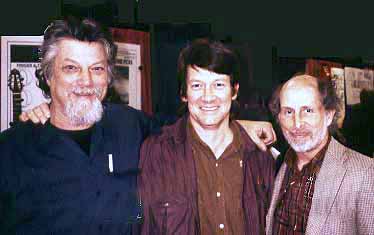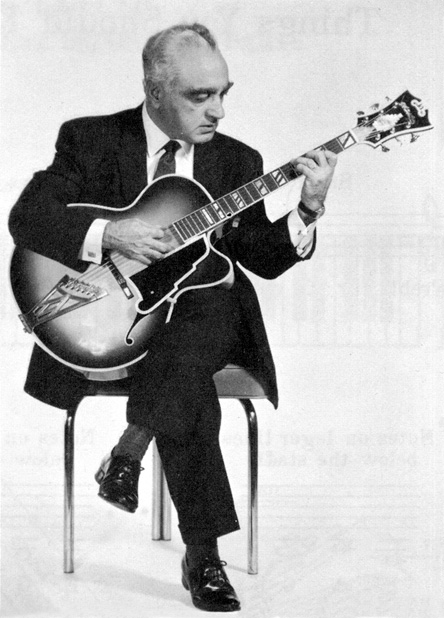| Paul Hostetter, luthier bowed instruments plectrum and other instruments professional background art plastic!
Email:
click
here
|
Sometime in high school, in suburban Detroit, when all my contemporaries were listening to the Kingston Trio and the Four Freshmen, I stumbled across the Harry Smith Anthologies, Ravi Shankar, Greek music, Frantic Ernie (a great Black DJ on WJBK), Reverend Gary Davis, Hungarian gypsies, Ian Buchanan, and the New Lost City Ramblers. A couple of longtime dear friends named Marc Chover and Bob Hewitt get the thanks for carting me to many, many concerts and gatherings, before I was quite old enough to do it myself. While still a budding teenage guitar player, I met Marc Silber. He was matriculating at U of M in Ann Arbor and was already a legendary guitar player and authority on the mystical old guitars, long before there were any books, luthier's guilds, internet, videos - anything! He became a hero of mine real quick. A few years later he was in Colorado, building banjos for Ode and working at the Denver Folklore Center (though I just missed him there when I moved west in 1963). Then he was in North Africa. Then he was in the south hanging out with great blues guys like Mance Lipscomb. Then he had a wonderful and very iconic guitar shop in Greenwich Village, where I did catch up with him. Then he was in Europe again, or was it the Bahamas? Then he disappeared, but showed up again after I’d moved to California. He gets better all the time. He's still my hero.
I went to the Newport Folk Festival in 1963 and never went home after that. I "roamed and rambled" for a couple of years. I went to Denver first. I don't know why Denver exactly, but I was hitchhiking and that's where I went, and it was a blessing. I have been a luthier for most of the years since 1963, when I made my first nuts and saddles for pay at the Denver Folklore Center. My cohorts and inspirations back then were bandmates and a circle of craftspeople I had met, most of whom were attached either to the Folklore Center or to the Ode Banjo Company. Among them: Marc Silber, Jon Lundberg (by mail and Railway Express), Creston "Kix" Stewart, and Ray Chatfield who were then at Ode, bandmates Mike Kropp, Kim King, John Fischbach, and Mac Ferris, and the mentor of us all, Harry M. Tuft, proprietor of the venerable Denver Folklore Center. |
 Marc Silber, myself and Harry M. Tuft, thirty-some years later. And this photo was taken long ago already! Whew! |
|
| When
I got lonesome for structure and focus, I (a high
school dropout) talked my way into a full-blown
university education, finally graduating in 1969.
During this time, in addition to teaching at Fava
Music, gigging and working at Motown, I worked as a TA
for Phillip Fike in the studio art department of Wayne
State University while working through a PhB at
Monteith College. As a teaching assistant in the art
metals studio, I moonlighted making lots of wedding
rings to help pay living expenses and tuition, and
playing in blues bands. My specialties were casting
(diamond settings to life bronzes) and sheet raising.
My experience in the realm of art materials
manipulation was pivotal in my refining my approach to
problem solving and lutherie. At the end of that
episode, with a triple major in studio art
(specializing in art metals, sculpture and ceramics),
humanities, and social sciences, I worked at the
Detroit Institute of Arts as an object conservator,
under S. N. Hlopoff. It was in this position that I
made my first tender leap from fretted instruments to
violin family instruments thanks to an association,
through the museum, with Curt Wunderlich, one of
Detroit's most esteemed luthiers and violin dealers at
that time. In 1970, weary of living in an inner-city war zone, I left decaying Detroit for California and by luck and happenstance, moved directly to Bonny Doon, about 75 miles south of San Francisco, quite near the ocean and Santa Cruz. After a very brief period working at the M.H. DeYoung Museum in San Francisco, I decided to lower stress, shorten my commute and avoid internecine museum politics, and instead hung out my shingle as a luthier in Santa Cruz. At the time, it seemed a remote place, but I staked my future here on the southern edge of the San Francisco Bay area, and I have never regretted the move. The Bay Area has always teemed with talent and good attitude, and some of my model luthiers and guiding spirits here have included: Richard Johnston and Frank Ford, who knew fretted instruments well before they opened Gryphon, and Henry Lanini, a superb violinmaker with whom I was privileged to work, and maverick bowmaker John Bolander. Not to forget Marc Silber, who has been somehow present in most phases of my life, a continuing guardian angel all these years. I met Richard Johnston and Frank Ford through the vibrant music scene in Berkeley, around 1971 or so. They were starting to make Gryphon guitars then, a bit, but the shop of that name had yet to exist. Jon Lundberg was still the premier vintage shop in the Bay Area. Richard and Frank were veterans of Lundberg’s, but they had a vision of another kind of place altogether, so they moved to Palo Alto and did a very good thing by opening Gryphon String Instruments. I cannot give thanks enough for the support and companionship I have received from both these guys over the last (gulp) forty-going-on-fifty years. Because they have always envisioned a music store as a center of real culture, not just a place to sell merchandise, they've been, and continue to be, kindred spirits. The historical inspirations are, of course, the geniuses whose works you see in museums: the northern Italian master luthiers of the Amati line—Antonio Stradivari, Giuseppe Guarneri, del Gesù, and so on, not to mention later maestros such as Jean-Baptiste Vuillaume, Joachim Tielke, Antonio Torres, John D'Angelico, and the superstar who set the bar for the modern luthiers, Luigi Mozzani. Over the years, I have met quite a number of luthiers who I consider masters and/or inspiring humans, whose understanding of instruments is exceptional. To name a few more: Stefan Sobell, Dana Bourgeois, Bill Collings, Jim Rickard, David Gusset, Earl Gormain, Oded Kishony, John Monteleone, Dan Erlewine, Michael Darnton, Flip Scipio, Ron Chacey, the late Richard Schneider, Rick Turner, Greg Rich, Otis Tomas, Steve Anderson, Don Young and Mac Gaines, Todd Cambio, Richard Hoover and Adam Rose at SCGC, and...well, I have lived a long time and have met a lot of good people. And while I am giving thanks, I must add François Charle. He's not a maker, but he's taught me an enormous amount about French guitars and Selmer Maccaferri guitars particularly. And a wistful acknowledgment to my late neighbor and once-upon-a-time pal and playing partner, Bob Brozman, who was also not a maker but who was a guide and co-conspirator in the realm of resophonic instruments and good music for many years. The real inspirations, of course, are the musicians who create the music and play the instruments.
Drop me a
line click
here This page © 1998 - 2014 |

 Another crucial, major
influence from Detroit was Joe Fava, owner of the
guitar store I grew up in, who was a gentleman, a
brilliant musician, an esteemed teacher, and a very
savvy collector and dealer of instruments. He had
the first D'Angelico I ever saw, the first National,
the first dot-neck L-5, the first OM-28, the first
Vinaccia mandolin, the first Loar F-5— all back
around 1960. He got me into the Gibson plant over in
Kalamazoo with a red carpet at my feet because I
taught in his studio. If you have ever seen those
old Gibson catalogs, he's one of those innumerable
Italian guitar wizards they sprinkled through their
pages. He's still my hero.
Another crucial, major
influence from Detroit was Joe Fava, owner of the
guitar store I grew up in, who was a gentleman, a
brilliant musician, an esteemed teacher, and a very
savvy collector and dealer of instruments. He had
the first D'Angelico I ever saw, the first National,
the first dot-neck L-5, the first OM-28, the first
Vinaccia mandolin, the first Loar F-5— all back
around 1960. He got me into the Gibson plant over in
Kalamazoo with a red carpet at my feet because I
taught in his studio. If you have ever seen those
old Gibson catalogs, he's one of those innumerable
Italian guitar wizards they sprinkled through their
pages. He's still my hero.